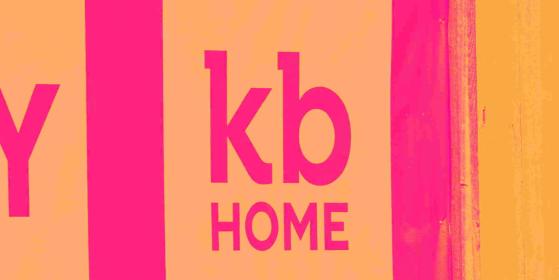Looking back on industrials stocks' Q2 earnings, we examine this quarter's best and worst performers, including KB Home (NYSE:KBH) and its peers.
Traditionally, industrials companies--while diverse in nature--have built competitive advantages via some combination of economies of scale, brand recognition, and strong relationships with customers such as manufacturers or contractors. In recent decades, secular trends like energy efficiency and automation are driving innovation, leading to incremental demand. However, these companies are still at the whim of macroeconomic health, which tends to be cyclical and can be impacted heavily by factors such as interest rates. Shocks like geopolitical conflicts can also impact this increasingly global industry.
The 11 industrials stocks we track reported a slower Q2; on average, revenues missed analyst consensus estimates by 1.9%. Stocks, especially growth stocks where cash flows further in the future are more important to the story, had a good end of 2023. But the beginning of 2024 has seen more volatile stock performance due to mixed inflation data, and industrials stocks have held roughly steady amidst all this, with share prices up 4.9% on average since the previous earnings results.
KB Home (NYSE:KBH) The first homebuilder to be listed on the NYSE, KB Home (NYSE:KB) is a homebuilding company targeting the first-time home buyer and move-up buyer markets.
KB Home reported revenues of $1.71 billion, down 3.1% year on year, exceeding analysts' expectations by 3.4%. Overall, it was a very strong quarter for the company with a solid beat of analysts' earnings estimates.
“We produced solid results in our 2024 second quarter, with our key metrics above the high end of our guidance ranges,” said Jeffrey Mezger, Chairman and Chief Executive Officer.
KB Home scored the biggest analyst estimates beat of the whole group. The stock is up 13.2% since reporting and currently trades at $77.04.
Is now the time to buy KB Home? Find out by reading the original article on StockStory, it's free.
Best Q2: Apogee (NASDAQ:APOG) Involved in the design of the Apple (NASDAQ:AAPL) Store on Fifth Avenue in New York City, Apogee (NASDAQ:APOG) sells architectural products and services such as high-performance glass for commercial buildings.
Apogee reported revenues of $331.5 million, down 8.3% year on year, in line with analysts' expectations. It was a very strong quarter for the company with an impressive beat of analysts' earnings estimates.
The market seems happy with the results as the stock is up 5.5% since reporting. It currently trades at $62.38.
Weakest Q2: Worthington (NYSE:WOR) Founded by a steel salesman, Worthington Enterprises (NYSE:WOR) specializes in steel processing, pressure cylinders, and engineered cabs for commercial markets.
Worthington reported revenues of $318.8 million, down 13.6% year on year, falling short of analysts' expectations by 9.6%. It was a weak quarter for the company with a miss of analysts' earnings and revenue estimates.
As expected, the stock is down 5% since the results and currently trades at $47.63.
Lennar (NYSE:NYSE:LEN) One of the largest homebuilders in America, Lennar (NYSE:LEN) is known for constructing affordable, move-up, and retirement homes across a range of markets and communities.
Lennar reported revenues of $8.77 billion, up 9% year on year, surpassing analysts' expectations by 2.5%. Revenue aside, it was an ok quarter for the company with a decent beat of analysts' earnings estimates but a miss of analysts' backlog sales estimates.
Lennar achieved the fastest revenue growth among its peers. The stock is up 1.7% since reporting and currently trades at $159.19.
Greenbrier (NYSE:GBX) Having designed the industry’s first double-decker railcar in the 1980s, Greenbrier (NYSE:GBX) supplies the freight rail transportation industry with railcars and related services.
Greenbrier reported revenues of $820.2 million, down 21% year on year, falling short of analysts' expectations by 10.9%. Zooming out, it was a slower quarter for the company with a miss of analysts' earnings estimates and full-year revenue guidance missing analysts' expectations.
Greenbrier had the weakest performance against analyst estimates and slowest revenue growth among its peers. The stock is down 3.8% since reporting and currently trades at $46.72.
This content was originally published on Stock Story

